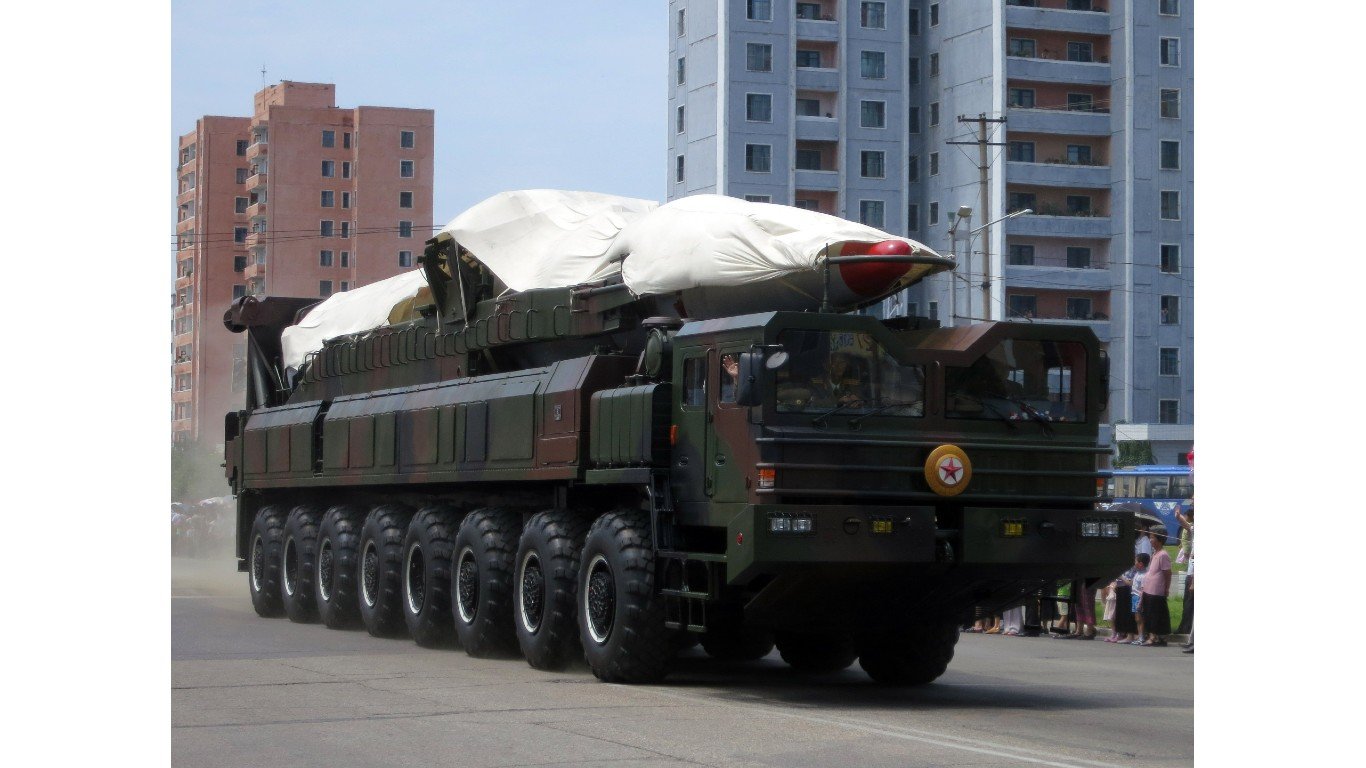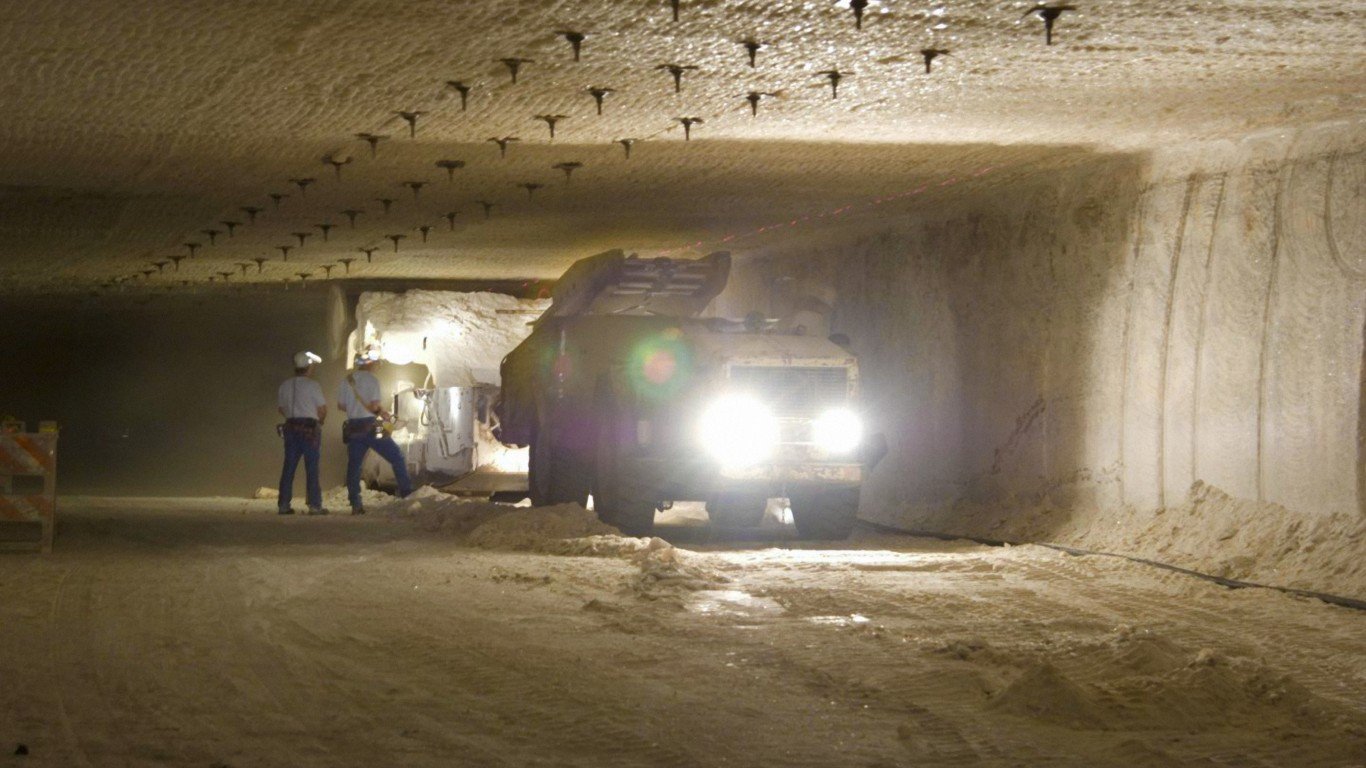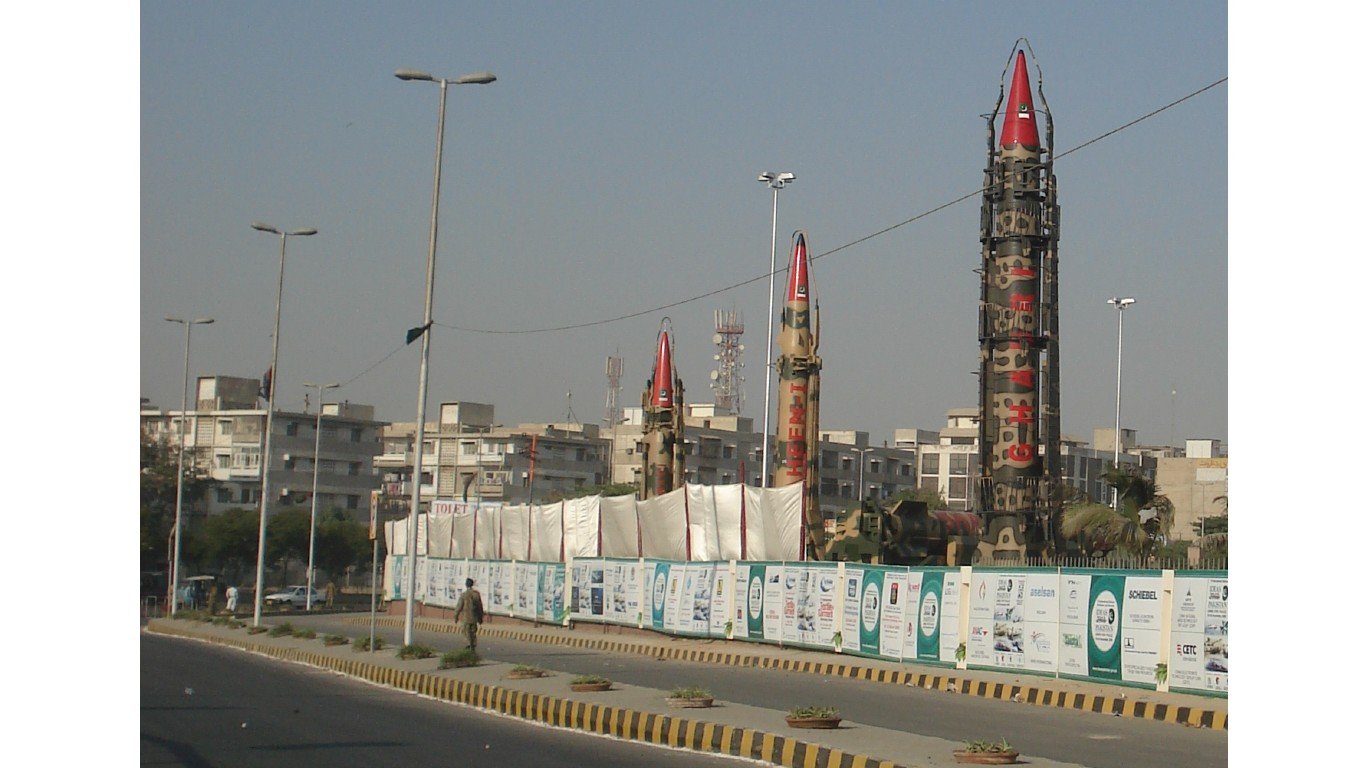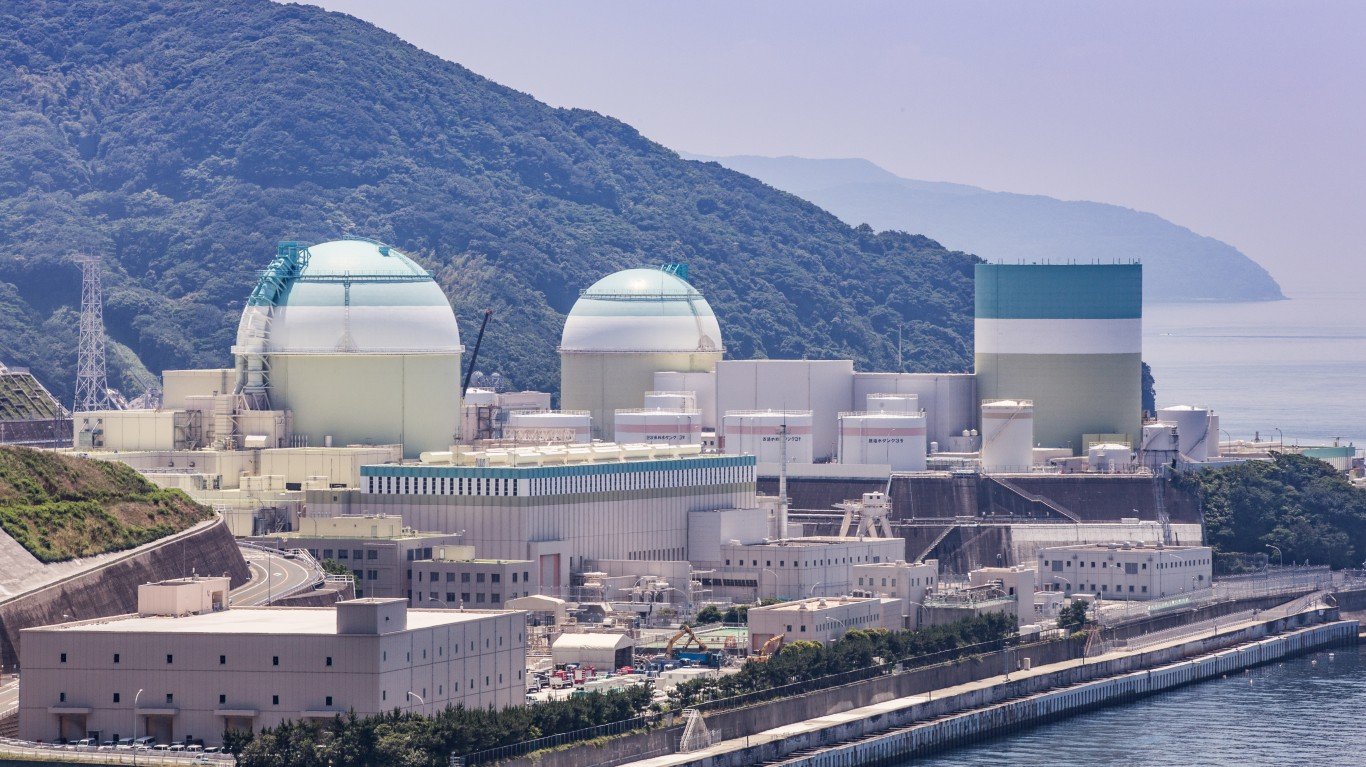
Japan
> No. of nuclear reactors, Nov 2022: 17 (+16 suspended reactor)
> Pct. of country energy supplied by nuclear, 2021: 7.2%
> No. of nuclear and radiology-related incidents since 1990: 45
Japan’s Fukushima nuclear accident of March 2011, instigated by the Tōhoku earthquake and tsunami, is the largest nuclear disaster since the April 1986 Chernobyl accident in Soviet Ukraine. Both accidents reached INES level 7, the highest possible rating.
The Fukushima accident led to numerous other incidents over the following years involving the management and control of contaminated water. The death toll from the Fukushima accident (both from direct exposure and ensuing health risks) was much lower than Chernobyl’s. The reason for this has been attributed to improved reactor design and safety protocol and Japan’s early response that involved the immediate evacuation of 160,000 people.
Korea, Republic Of
> No. of nuclear reactors, Nov 2022: 25
> Pct. of country energy supplied by nuclear, 2021: 28.0%
> No. of nuclear and radiology-related incidents since 1990: 52
Forty-five of South Korea’s 52 nuclear and radiation-related incidents since 1990 registered a zero on the International Nuclear and Radiological Event Scale, meaning the incidents had no safety significance. Out of the seven incidents that had safety significance, only one rose to level 3, meaning at least one worker was exposed to a non-lethal injury (i.e. radiation burns) from a leak contained to the facility, and the leak may have had the potential to be a more dangerous incident.
That mishap occurred in March 2009 when a radiography worker at a pipe-welding workshop in the southern city of Jinju was exposed to enough iridium-192 to be injured by severe burns on his fingers from an excess full-body dose of radiation.
Mexico
> No. of nuclear reactors, Nov 2022: 2
> Pct. of country energy supplied by nuclear, 2021: 5.3%
> No. of nuclear and radiology-related incidents since 1990: 34
Mexico became a member of the global nuclear power club when the first of its two reactors at a plant on the coast of eastern Veracruz state went online in 1990. A second reactor was activated at the facility five years later. Since then, 14 of Mexico’s reported 34 nuclear and radiation-related incidents have originated at the Laguna Verde Nuclear Power Station, the most recent took place in 2009, when a door to one of the reactor units was left unlocked. Though nobody was injured, the safety breach earned the incident a level 2 on the International Nuclear and Radiological Event Scale.
The most significant radiation-related incident in Mexico occurred in December 2003, when a truck containing radioactive waste from a hospital was stolen and radioactive cobalt-60 was dumped in a field in central Mexico.
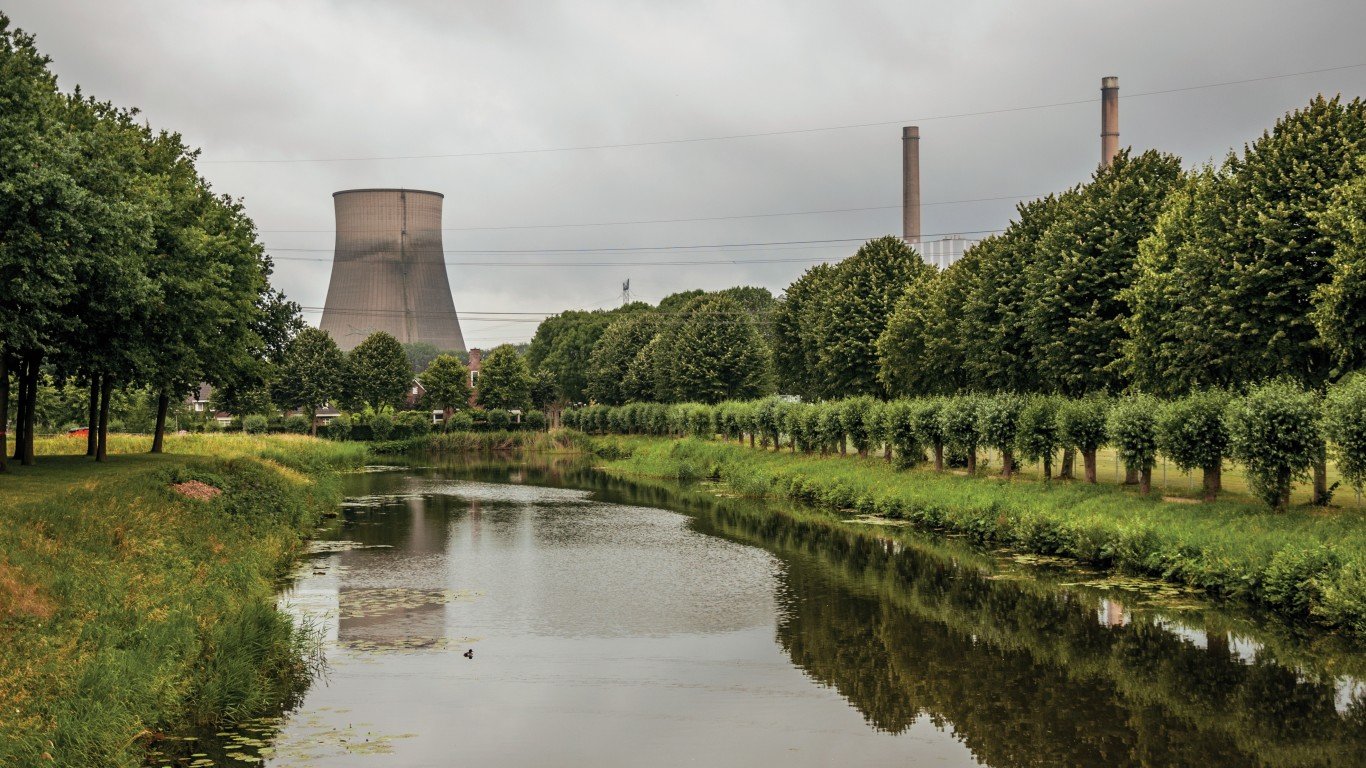
Netherlands
> No. of nuclear reactors, Nov 2022: 1
> Pct. of country energy supplied by nuclear, 2021: 3.1%
> No. of nuclear and radiology-related incidents since 1990: 20
Since 1996, the Netherlands has reported one radiation-related incident at its sole nuclear power reactor near the town of Borssele in December of that year: a minor event of mispositioned valves that suggests a breach in safety protocol. Eleven of Holland’s 20 reported radiation-related incidents involved discoveries of radioactive materials in discarded scrap at or near the country’s massive container ports. Scrap metal is a common source of potentially dangerous radiological materials.
Pakistan
> No. of nuclear reactors, Nov 2022: 6
> Pct. of country energy supplied by nuclear, 2021: 10.6%
> No. of nuclear and radiology-related incidents since 1990: 11
Seven of Pakistan’s reported 11 radiation mishaps occurred at its nuclear power plant facilities. But the most alarming incident, which measured INES level 3, took place in October 2012, when three workers were exposed to dangerous levels of iridium-192 while conducting industrial radiography at a company near Lahore.
